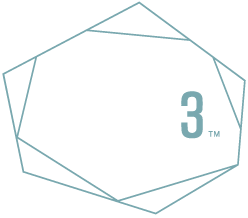How Google’s New Privacy Updates Affect Digital Marketing
Update June 2021: The rollout has been pushed back to 2023. Since these changes are so major, more time is needed to make sure the solutions are the right ones. Testing will begin again in 2022.
—
FLoC, or Federated Learning of Cohorts, is a part of Google’s Privacy Sandbox project to increase privacy for users in Chrome. The main goal is to pivot away from individual-specific data—like browsing history, which is captured and stored by third-party cookies—in favor of Google cohorts based on the websites users visit. This information is compiled and stored within the browser. Google is calling this interest-based advertising, and it makes up the landscape we expect to operate in during the months and years ahead.
So what does a “cookieless” digital marketing world look like? Here’s what we know and how you can prepare your digital marketing strategy.
What are first-party and third-party cookies?
There are two main types of cookies—used for data collection and storage—that users interact with online.
The digital marketing world currently runs on third-party cookies. These are methods of tracking that exist beyond the domain on which they are installed, allowing marketers to serve highly specific ads to individuals as they move around the web and from site to site. When Google announced they would be banning these cookies with no plans to recreate their own version of the same technology, digital marketer’s eyebrows rose across the globe.
First-party cookies are specific to the domain on which they are installed, and they exist to improve the user experience on that domain when the user visits multiple times. First-party cookies are in action when a site saves your password or keeps items saved in your cart. Third-party cookies would allow you to see ads for that item in your cart on a different, unrelated site. This data collection from first-party cookies is not going anywhere, and the data that is collected will be used to assign users to cohorts within the browser.
What is a cohort and how are users grouped?
A cohort represents a pattern of browsing behavior clustered together—not a group of individuals clustered together. Cohorts are given a number, 4365 or 8752 for example, and within those are thousands of users or browsers with similar behavior—like browsers that visited mountain biking sites. A user’s browser stores their information to assign them to a cohort then only shares that cohort ID.
In short, the goal of cohorts is to group together enough users that it would be impossible to distinguish any individual but small enough that ad targeting can still be specific to those users and their behaviors.
As browsing behavior changes, user’s browsers will move into different cohorts. For example, the mountain bike has been purchased and now that user is researching travel. That user’s browser will now belong to a travel cohort, and advertisers targeting based on travel interests will be able to show ads to that person without knowing that individual’s browsing history.
How long are users assigned to a cohort?
A browser can be reassigned to a cohort roughly every 7 days if browsing behavior changes. This means if we are targeting the several thousand users in the travel cohort 8752, we can expect the browsers, or individuals, within that group to be phasing in and out almost constantly.
What about ad targeting and retargeting ads?
We know ad targeting and Google ads retargeting will be based on user interest cohorts. Information about which cohort a user belongs to is determined by and stored in their browser. When a user visits a site that serves ads, the ad networks partnered with that site (including Google’s network) communicate with the browser to show the user relevant ads based on their cohorts. As the advertiser, we submit ads to interest-based catalogues that will correlate with cohorts.
Remarketing campaigns will be strongly impacted by the discontinuation of third-party cookies, but Google is working on something to amend that. Turtledove (lots of bird references here) is another Privacy Sandbox feature aimed at creating privacy-first remarketing solutions. So far, this is just a proposal. All we know for sure is that something is in the works.
It’s important to note that intent-based search like SEO and PPC aren’t as affected by this change.
Will conversion tracking change?
Conversion tracking will not be impacted. We will still be able to measure actions taken—or goals completed—on the websites we track.
Our ability to track on a deeper level, like for multi-channel attribution, may be impacted differently but overall impacts are still not certain at this point.
Safari or Firefox vs Chrome?
Safari and Firefox have already blocked third-party cookies, but since they have much less market share, Chrome’s move to do the same has garnered a lot more attention. Currently, FLoC will only be rolled out to Google’s Chrome browser as part of Google’s privacy policy. There is potential for something similar to be adopted across other browsers, but there are no concrete details to indicate whether this will be the case.
How do these changes impact Fair Housing?
This change should not impact our ability to abide by fair housing principles and may even improve our ability to target ads more inclusively since we won’t be targeting based on individuals or their data.
The algorithm that builds cohorts is supposed to be designed to check whether a cohort could be correlated with sensitive categories such as race or medical history before creating it. A browser that assigns users to respective cohorts will only be able to select between options that don’t reveal sensitive categories.
When do we expect to see this fully rolled out?
Sometime in 2022. All components of the Privacy Sandbox, including FLoC, are currently in the testing mode and will likely be revised before the final release.
Google will be testing FLoC and cohort-based targeting with advertisers starting in Q2 of 2021.
What are we doing to prepare?
Right now, we’re building and expanding our first-party data. This includes email lists and contact lists built from on-site interactions—like contact form completions—from which we can build lookalike audiences and our own remarketing lists. This strategy is not new, but we will be placing a stronger emphasis on creating these lists for each community we work with instead of relying on auto-populated remarketing lists built in Google Analytics.
We’re also constantly testing and learning. Staying on top of updates and testing how these changes impact and function within our own environment will be crucial throughout this process.
In Summary
These new strategies are in the testing phase right now and there will be a lot more learning to come this year. There are also regulations to comply with—there may be pushback from CCPA and GDPR that will need to be ironed out before Google’s final rollout.
With so much still uncertain, our strategy at Agency FIFTY3 is to learn all we can, remain flexible in our adapted strategies, and look for the best way to move with you into a privacy-first online environment. We will post more information as things solidify in the months to come, and as always, we’re here to help with any campaign or account-specific questions you may have.
Sign up for our newsletter.
Stay in the know about our insights and industry trends.




